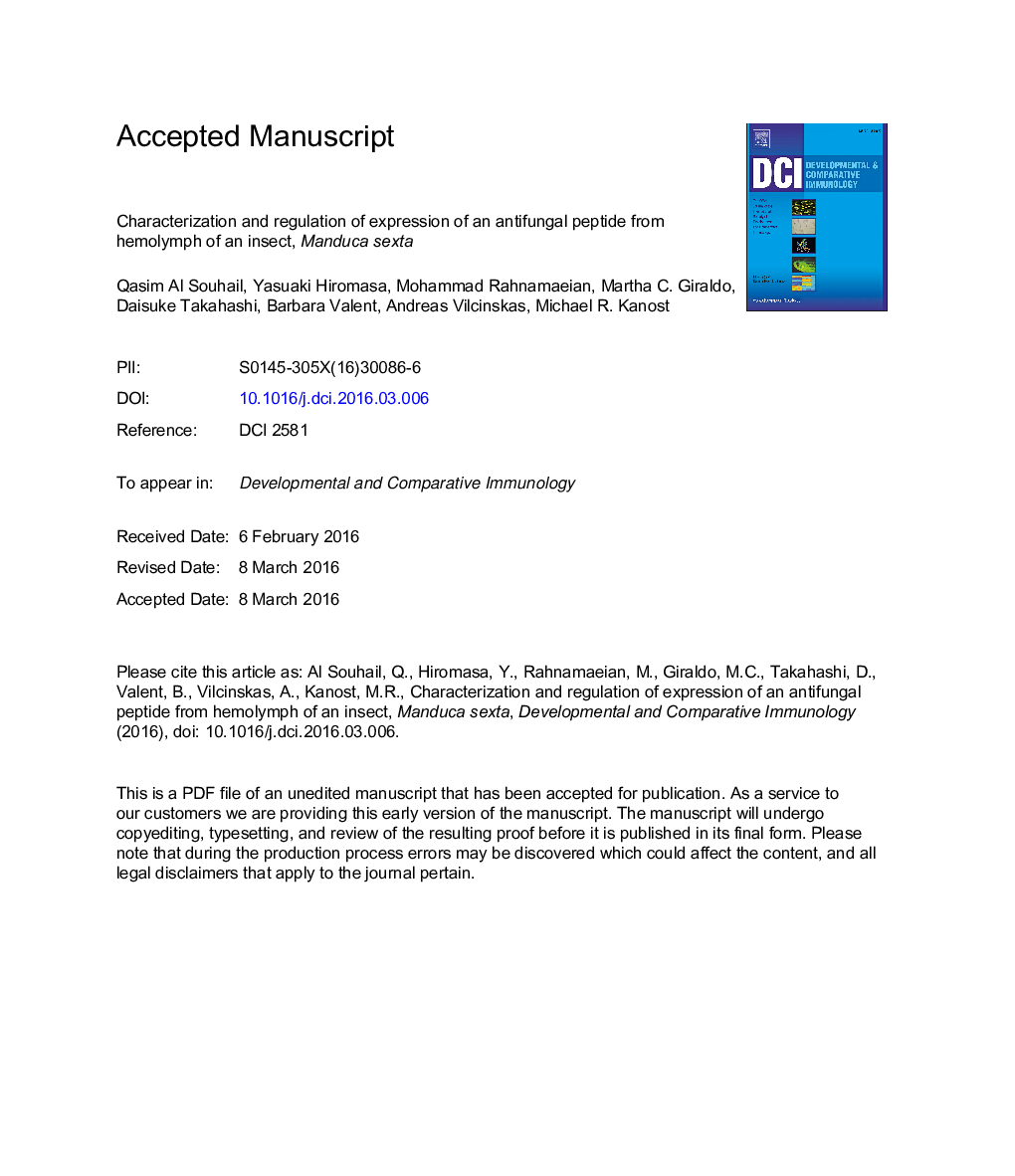| Article ID | Journal | Published Year | Pages | File Type |
|---|---|---|---|---|
| 8497963 | Developmental & Comparative Immunology | 2016 | 46 Pages |
Abstract
Insects secrete antimicrobial peptides as part of the innate immune response. Most antimicrobial peptides from insects have antibacterial but not antifungal activity. We have characterized an antifungal peptide, diapausin-1 from hemolymph of a lepidopteran insect, Manduca sexta (tobacco hornworm). Diapausin-1 was isolated by size exclusion chromatography from hemolymph plasma of larvae that were previously injected with a yeast, Saccharomyces cerevisiae. Fractions containing activity against S. cerevisiae were analyzed by SDS-PAGE and MALDI-TOF MS/MS and found to contain a 45-residue peptide that was encoded by sequences identified in M. sexta transcriptome and genome databases. A cDNA for diapausin-1 was cloned from cDNA prepared from fat body RNA. Diapausin-1 is a member of the diapausin family of peptides, which includes members known to have antifungal activity. The M. sexta genome contains 14 genes with high similarity to diapausin-1, each with 6 conserved Cys residues. Diapausin-1 was produced as a recombinant protein in Escherichia coli. Purified recombinant diapausin-1 was active against S. cerevisiae, with IC50 of 12 μM, but had no detectable activity against bacteria. Spores of some plant fungal pathogens treated with diapausin-1 had curled germination tubes or reduced and branched hyphal growth. Diapausin-1 mRNA level in fat body strongly increased after larvae were injected with yeast or with Micrococcus luteus. In addition, diapausin-1 mRNA levels increased in midgut and fat body at the wandering larval stage prior to pupation, suggesting developmental regulation of the gene. Our results indicate that synthesis of diapausin-1 is part of an antifungal innate immune response to infection in M. sexta.
Related Topics
Life Sciences
Biochemistry, Genetics and Molecular Biology
Developmental Biology
Authors
Qasim Al Souhail, Yasuaki Hiromasa, Mohammad Rahnamaeian, Martha C. Giraldo, Daisuke Takahashi, Barbara Valent, Andreas Vilcinskas, Michael R. Kanost,
